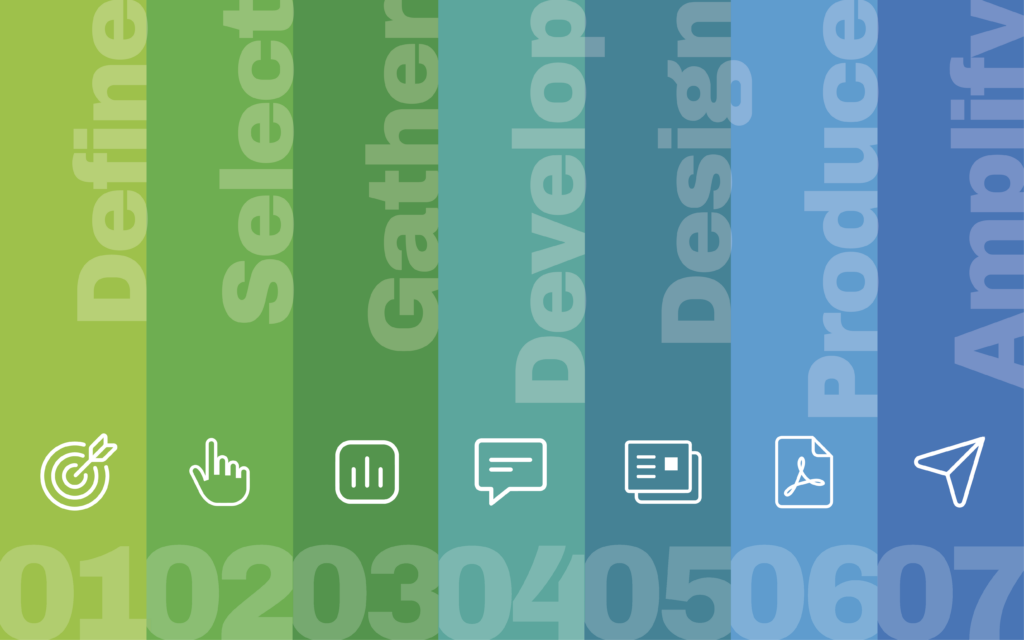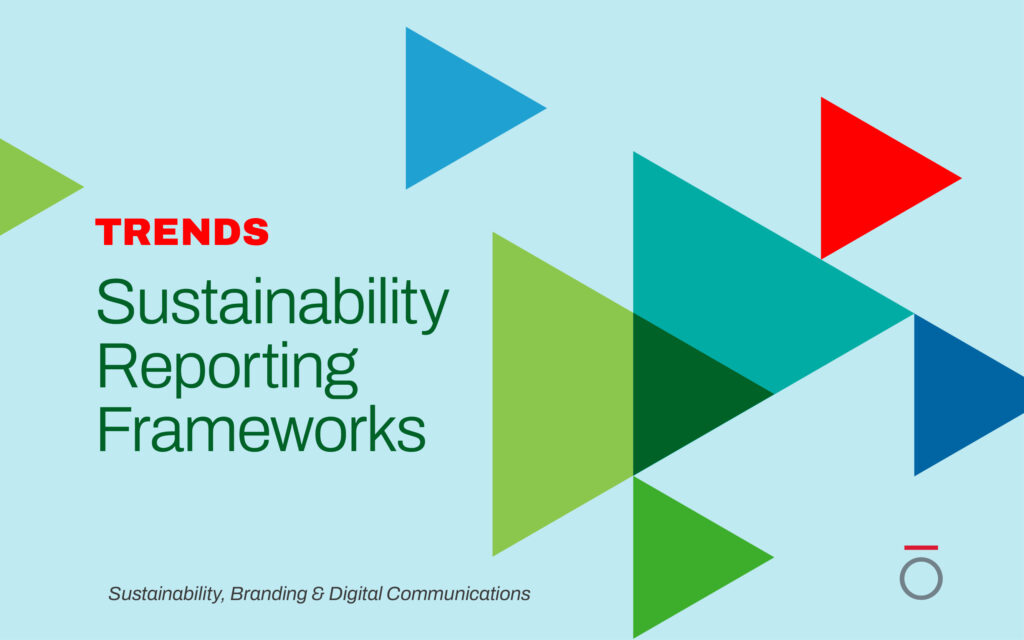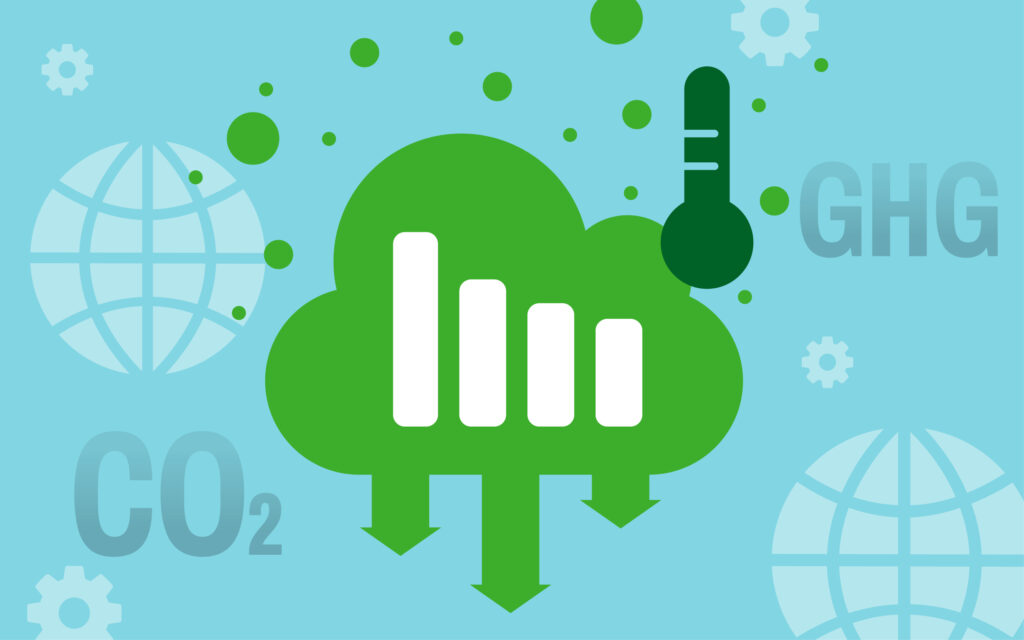Seven Steps to Get Started With SDG Reporting
Sustainability & ESG / June 11, 2024
By Mary Riddle
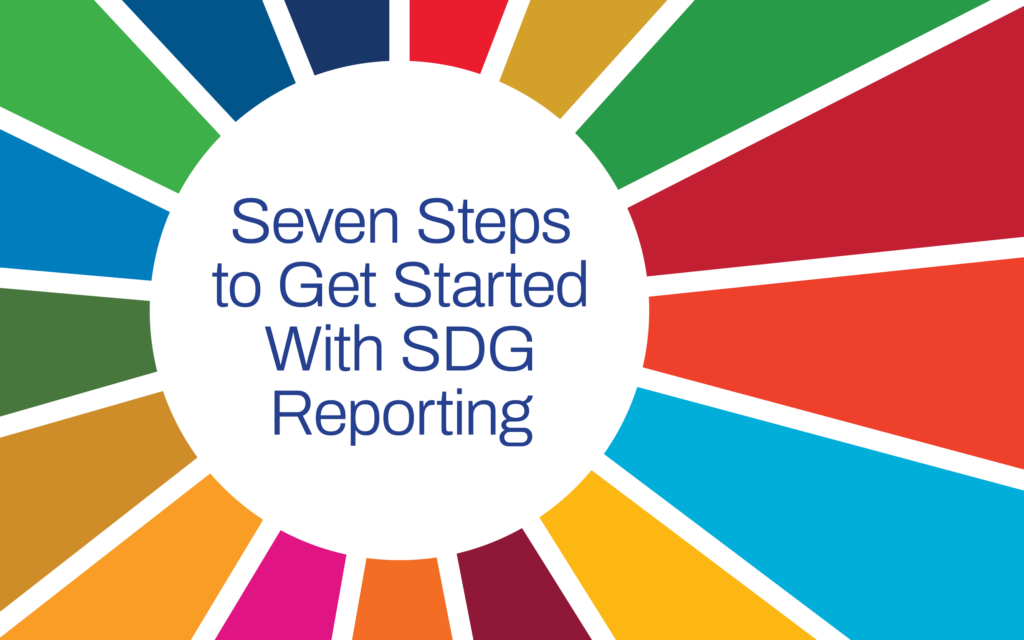
SDG reporting serves as a valuable tool for businesses to align their operations with the United Nations’ Sustainable Development Goals (SDGs), allowing them to meaningfully contribute to global efforts in creating a sustainable future.
When SDG reporting is done well, it can align business practices with global sustainability goals, thereby enhancing corporate reputation and stakeholder trust.
By transparently disclosing their contributions to the SDGs, companies can demonstrate their commitment to social responsibility, environmental stewardship, and ethical governance. This can attract investors, customers, and talent who prioritize sustainability, ultimately driving long-term financial performance.
Additionally, SDG reporting helps companies identify risks and opportunities related to sustainability and fosters innovation and operational efficiency.
To implement SDG reporting at your organization, review the recommendations below.
Understanding the Sustainable Development Goals
Introduction to the SDGs
The Sustainable Development Goals (SDGs) are a set of 17 interconnected global goals established by the United Nations in 2015 as part of the 2030 Agenda for Sustainable Development. They are designed to address a wide range of global challenges, including poverty, inequality, climate change, environmental degradation, peace, and justice. The SDGs are intended to be a blueprint for achieving a better and more sustainable future for all.
Overview of the 17 SDGs
The 17 SDGs are:
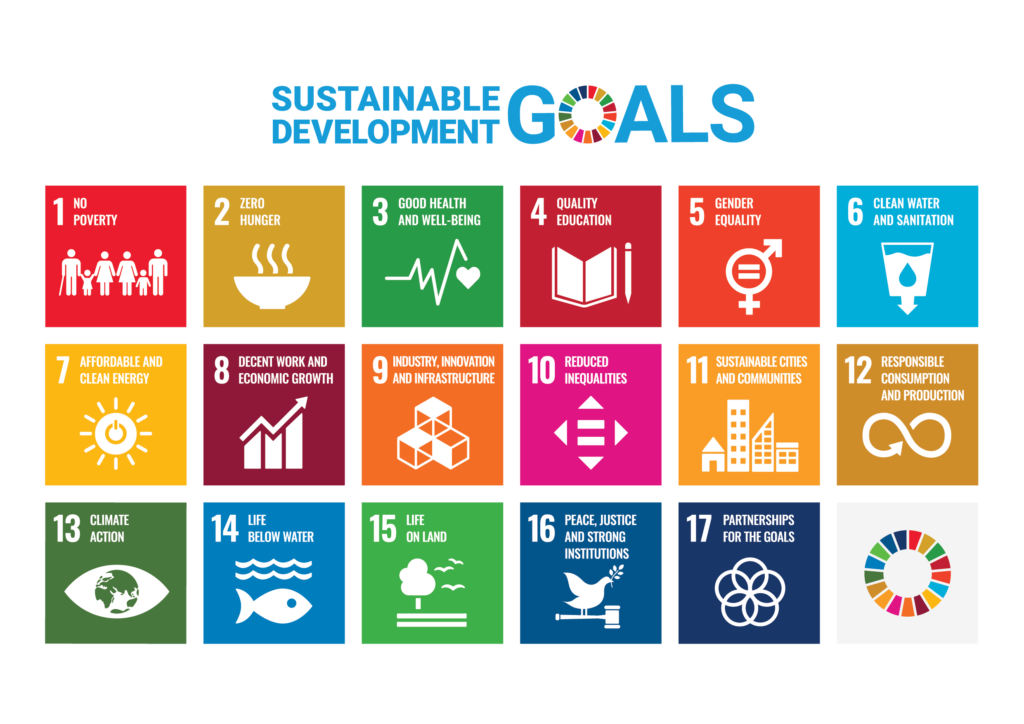
Each SDG is further broken down into specific targets, providing a detailed roadmap for sustainable development. Understanding these goals and targets is crucial for businesses, helping them identify where their operations intersect with global sustainability efforts and setting the stage for effective SDG reporting.
Importance of aligning with SDGs for businesses
The SDGs provide governments, businesses, and civil society with 169 specific targets and indicators to guide policy-making and action and measure progress, while promoting accountability and continuous improvement. The targets also act as a comprehensive and universal framework to promote sustainable development, balancing economic growth, social inclusion, and environmental protection.
Many of the goals focus on improving the lives of the most vulnerable populations, such as those living in poverty, women, children, and marginalized communities, and the 2030 deadline emphasizes the urgency of taking action now to address these challenges and improve the quality of life for future generations.
Accelerating SDG Achievement
Current progress on SDGs
Even as more corporations are reporting on their SDG alignment, the pace of progress in achieving the goals has been slow. In 2023, at the goals’ midpoint, only 15% of the SDGs are on track for achievement, and progress on most of the goals has been slowed or even reversed.
Challenges faced in achieving the goals
Several of the SDGs are lagging due to global crises. For example, SDG 2 (Zero Hunger) has regressed significantly in the last five years due to the pandemic, geopolitical unrest, economic instability, and climate-related disasters. Intensified efforts are urgently needed to put the SDGs back on course for achievement.
UN guide for companies to maximize impacts on SDGs
In 2023, the UN published the SDG Stocktake, a guide for companies to maximize their impacts on the SDGs and get the goals back on track before 2030. The guide included 10 pathways with cross-sector recommendations that can help companies embed the SDGs into their core business practices that included calls for living wages, anti-bribery policies, gender-equal pay, decarbonization progress, preservation of nature, circularity, and an increase in sustainable finance.
No business can make significant progress on all 17 SDGs. However, by focusing energy and resources on areas where businesses can maximize positive impacts and minimize negative impacts, corporations can contribute to the achievement of the goals by 2030.
No business can make significant progress on all 17 SDGs. However, by focusing energy and resources on areas where businesses can maximize positive impacts and minimize negative impacts, corporations can contribute to the achievement of the goals by 2030.
Getting Started with SDG Reporting
Before you begin this journey, make sure that the Board of Directors and Executive Leadership are engaged with the SDG Goals. Involve them from the start, ensuring they provide the necessary supervision and resources.
Engage with the board and executives to highlight the significance of the SDGs, their alignment with the company’s principles and long-term plan, and the advantages of dedication to these goals. Their commitment and leadership are crucial for driving meaningful change and embedding sustainability into the core of the organization.
If your company has not yet committed to evaluating and reporting on its impact on the SDGs, it’s not too late. Here are seven steps to get started:
Step 1: Align Your Business with the SDGs
The first step is identifying which of the 17 goals and their associated targets are most relevant to your business operations, focusing on the areas where your business can make a significant impact.
To do this, you need to conduct a thorough review of your business activities. Consider your products, services, operations, and supply chains, and look for areas where your business intersects with the SDGs. This process will help you identify the SDGs that align with your business.
Remember, aligning your business with the SDGs is not just about mitigating risks. It’s also about identifying opportunities for innovation and positive impacts that contribute to sustainable development.
Step 2: Engage Stakeholders
Next, engage your stakeholders. Stakeholders can include employees, customers, investors, suppliers, and the communities in which you operate. Their insights can help you understand which SDGs are most material, or relevant, to your business.
Stakeholder engagement is a two-part process. First, the organization must communicate relevant sustainability and SDG goals to stakeholders and then listen to stakeholder feedback. This feedback can provide valuable insights into the social, environmental, and economic impacts of your business, identifying opportunities for improvement and innovation.
This process can overlap with a materiality assessment and can help you prioritize your efforts and ensure that your SDG reporting is focused and relevant.
Step 3: Setting Measurable Targets
Once you’ve identified the most relevant SDGs for your business, the next step is to set measurable targets. These targets should be specific, measurable, achievable, relevant, and time-bound and should align with the indicators set out by the United Nations for each SDG.
Setting measurable targets is crucial for tracking progress and demonstrating accountability. It allows you to quantify your impact and make data-driven decisions. Moreover, it provides a clear roadmap for your sustainability efforts, helping to ensure that your actions are aligned with your SDG commitments. Data can also help your organization find areas of strength that can be accelerated for further positive impacts.
Develop KPIs and utilize data to incentivize progress, and consider incorporating ESG considerations into corporate remuneration policies. SDG targets can also be integrated into performance metrics and job responsibilities.
Step 4: Integrate SDG Data Collection
As mentioned in Step 3, integrating data collection into your existing business processes is critical for decision-making. This involves identifying the data needed to track your SDG targets and establishing systems for collecting this data.
It’s important to ensure that your data collection methods are robust and reliable. This will enhance the credibility of your SDG Reporting and provide a solid foundation for your impact measurement efforts.
Invest in data management systems or providers that can help companies understand their impacts and set specific, measurable goals related to the SDGs.
Step 5: Analyze Impact and Inform Decisions
Once you’ve collected the necessary data, it’s time to analyze it. This step involves interpreting the data to assess your impact on the SDGs. It’s crucial to understand how your business activities are contributing to or hindering the achievement of these goals.
The insights gained from this analysis should inform your decision-making process. They can help you identify areas where you’re making significant progress, as well as areas that need improvement. This information can guide your sustainability strategies and help you make more informed, impactful decisions.
Step 6: Report on SDG Progress
After analyzing your impact, the next step is to compile and communicate your progress. This is where SDG Reporting comes into play. It’s about presenting your findings in a clear, concise, and engaging manner. Goals and metrics surrounding SDG performance should be integrated into your company’s annual sustainability report, including both successes and areas in need of improvement.
Your sustainability report should highlight your achievements and challenges in relation to the SDGs. It should provide a comprehensive overview of your efforts, demonstrating your commitment to sustainable development.
Step 7: Review and Refine SDG Strategies
SDG Reporting is not a one-time event, but a continuous process. The SDGs require time and global effort, so regularly review and assess corporate progress toward the goals. Adapt strategies and targets based on new insights, challenges, and opportunities. It requires regular review and refinement of your strategies. This is to ensure that your efforts remain aligned with the evolving global sustainability landscape.
Take the time to reflect on your performance and learn from your experiences. Identify areas for improvement and make necessary adjustments. Remember, the ultimate goal of SDG Reporting is to drive positive change. Therefore, your strategies should be flexible and adaptable, capable of responding to new challenges and opportunities as they arise.
Remember, the ultimate goal of SDG Reporting is to drive positive change. Therefore, your strategies should be flexible and adaptable, capable of responding to new challenges and opportunities as they arise.
Measuring Your SDG Progress Utilizing Frameworks and Standards
There are several best practices available to companies wanting to report their SDG progress using a specific framework or standard.
The SDG Impact Standards are a set of guidelines developed by the United Nations Development Programme (UNDP) to help organizations integrate the SDGs into their strategies, management, and operations. These standards provide a framework for measuring and managing impact on the SDGs, ensuring that organizations contribute positively to sustainable development through investments and operational expansions.
Additionally, the United Nations Global Compact (UNGC) provides principles-based frameworks and SDG management tools for companies to report on their progress towards the SDGs.
Companies that report using the Global Reporting Initiative (GRI), can also create a linkage document to map their SDG disclosures against SDG progress, on both a goal and target level.
Develop a table or matrix to map the relationships between GRI disclosures and SDG targets (see example below). The table should have columns for GRI disclosure numbers, the corresponding SDG targets, and descriptions of the linkages. For each linkage, also provide a brief explanation of how the GRI disclosure contributes to the achievement of the SDG target. This can include examples of specific actions or outcomes.
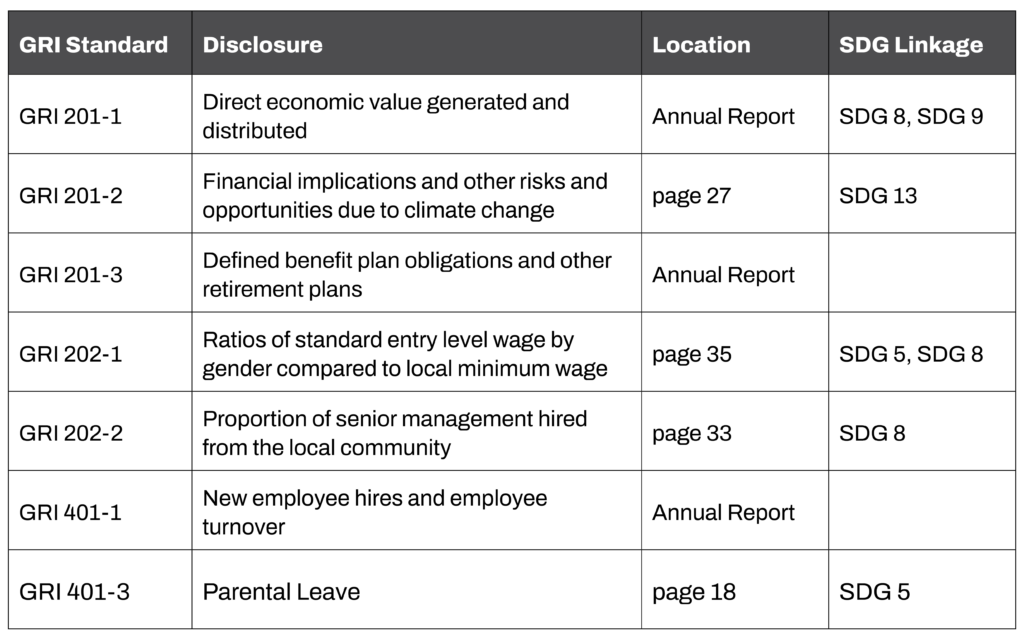
Are You Ready to Report on the SDGs?
While the world is facing complex and interlinked challenges that have the potential to further derail the SDGs, the private sector can help get the goals back on track. By adopting and reporting on the SDGs, companies can boost brand reputation and drive value, while contributing to the well-being of society as a whole.
If you’re interested in discovering how OBATA can assist your company in developing an SDG strategy, please don’t hesitate to get in touch with us. Contact OBATA to learn more.
